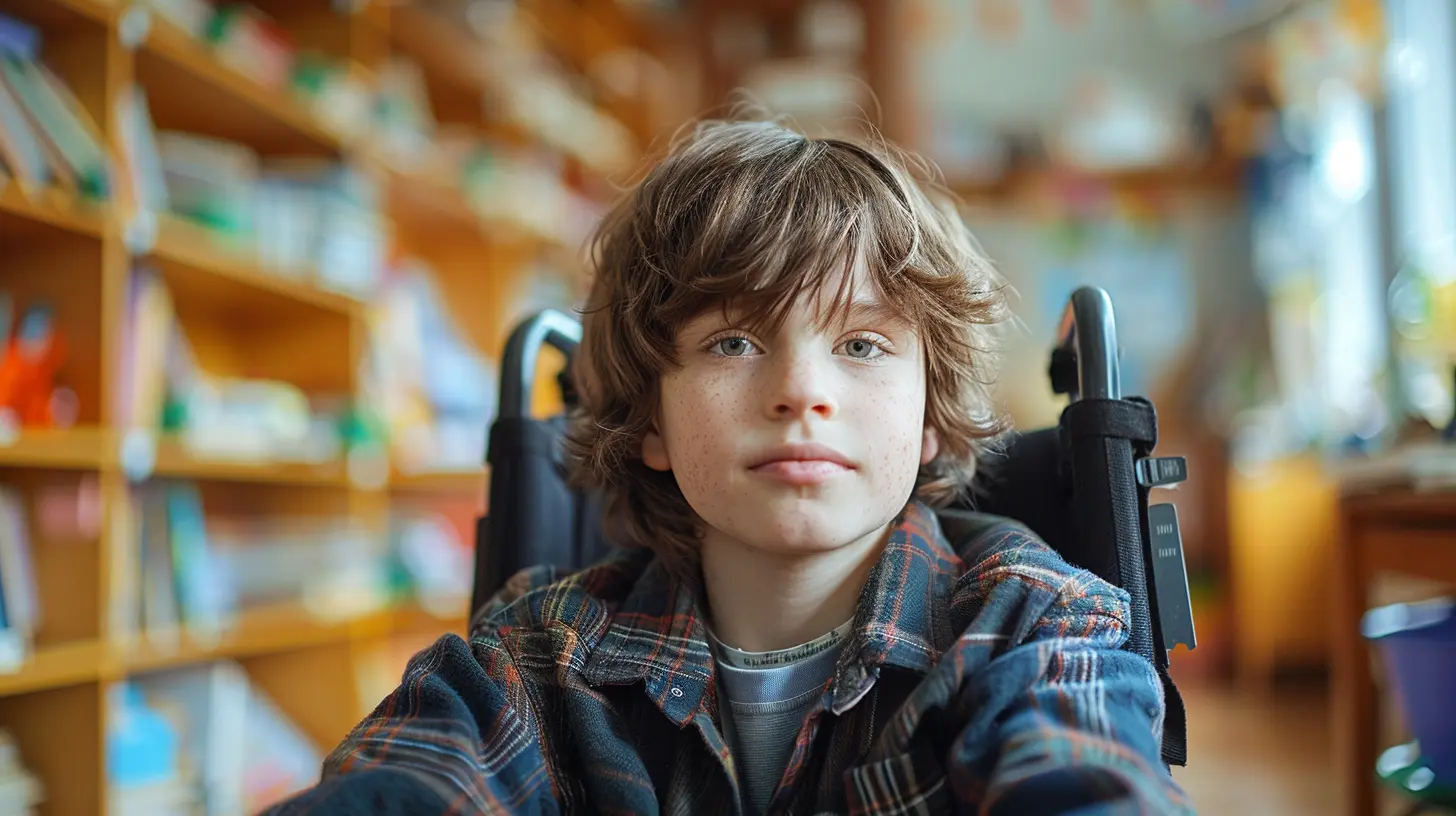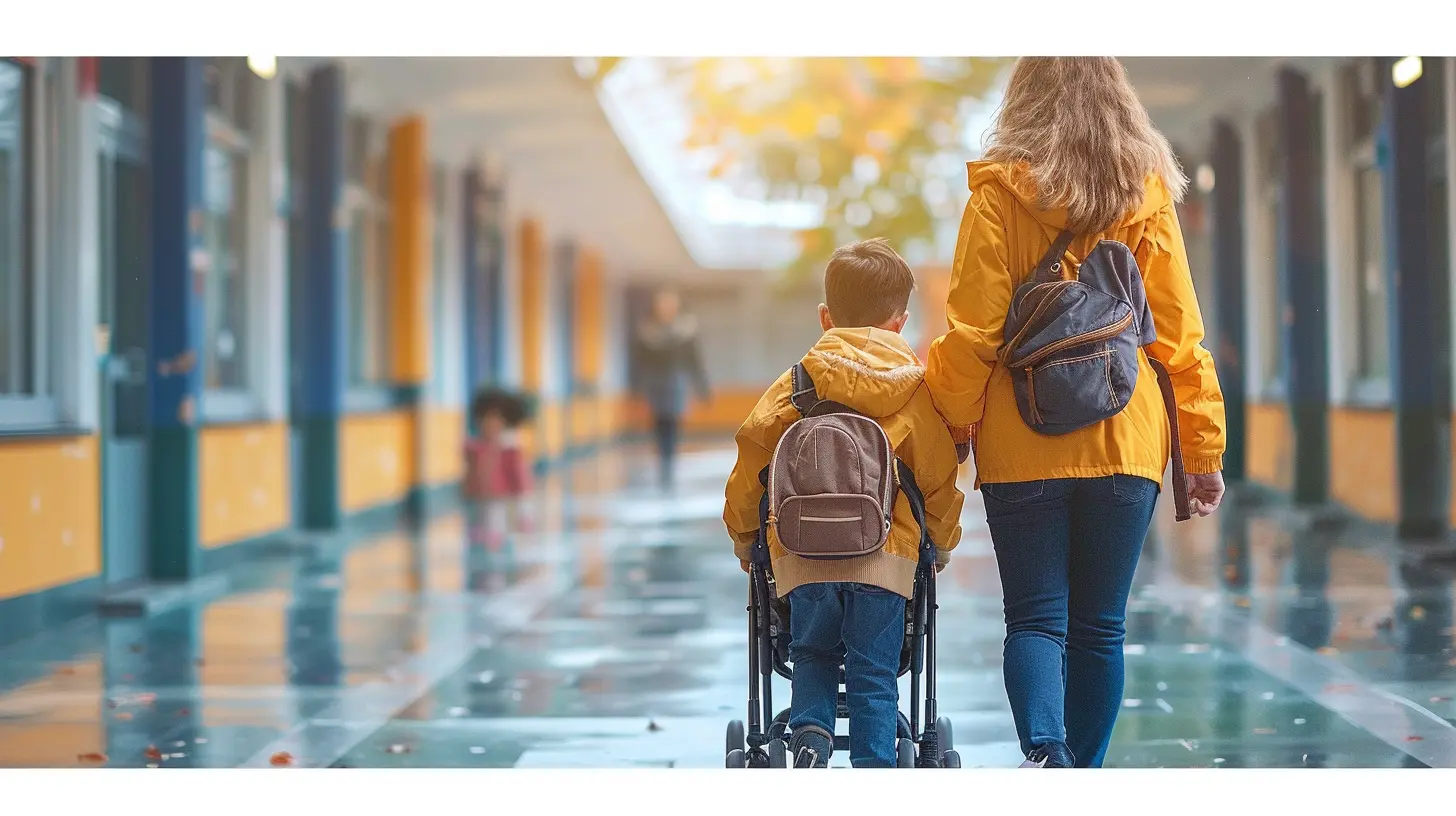How to Help Children with Learning Disabilities Thrive in Extracurricular Activities
21 November 2025
Extracurricular activities are more than just a break from academic work—they provide children with a chance to develop essential social, emotional, and physical skills that will serve them throughout their lives. For children with learning disabilities, however, these activities can sometimes feel daunting or overwhelming. But here's the good news: with the right support, children with learning disabilities can not only participate in extracurricular activities but also thrive in them.
So, how can we, as parents, teachers, and mentors, help these children succeed? In this article, we'll explore strategies, tips, and tricks to ensure children with learning disabilities find joy and growth in extracurricular activities. Ready to dive in? Let’s go!

What Are Learning Disabilities?
Before we jump into the practical tips, let’s quickly define what we mean by “learning disabilities.” Learning disabilities (LDs) are neurological conditions that affect the brain's ability to receive, process, store, and respond to information. They can manifest in various forms, including dyslexia (difficulty reading), dyscalculia (difficulty with math), and dysgraphia (difficulty writing), among others.But while learning disabilities can impact academic performance, they don’t define a child’s capabilities. In fact, many children with LDs have unique strengths, talents, and passions that can shine brightly in extracurricular activities.

The Benefits of Extracurricular Activities for Children with Learning Disabilities
You might be wondering, “Why put my child in extracurricular activities if they’re already struggling with school?” It’s a fair question, and here’s the answer: extracurricular activities can provide a much-needed outlet for children with learning disabilities. Let’s break it down:1. Boosts Self-Esteem and Confidence
Children with learning disabilities often face academic challenges, which can lead to feelings of frustration or inadequacy. Engaging in activities outside of the classroom gives them a chance to succeed in areas where they might not face the same challenges. Imagine the joy of scoring a goal in soccer or painting a masterpiece in art class. These victories build confidence and can carry over into academic settings.2. Encourages Social Skills Development
Many children with LDs struggle with social interactions, but extracurricular activities offer a structured environment to practice these skills. Working as part of a team, sharing, communicating, and problem-solving are all integral parts of activities like sports, drama, or music.3. Promotes Physical and Emotional Well-being
Whether it’s running around on a soccer field or expressing feelings through drama, extracurricular activities provide an outlet for physical and emotional energy. This can be incredibly beneficial for children with learning disabilities who might feel pent-up or stressed by their academic struggles.4. Reduces Stress and Anxiety
School can be stressful, especially for children with learning disabilities. Extracurricular activities give kids the chance to relax, engage in something they enjoy, and break away from the pressures of academics. It’s a mental breather—think of it as hitting the “refresh” button!
Finding the Right Activity for Your Child
Not every activity will be the right fit for every child, and that’s okay! The key is to find something that aligns with your child’s interests, strengths, and abilities.1. Let Them Lead the Way
Ask your child what interests them. Do they love animals? Maybe a pet care class or volunteering at an animal shelter could be a great fit. Do they enjoy building things? Robotics or a Lego club might be their jam. When kids are passionate about something, they’re more likely to stick with it.2. Consider Their Strengths
While it’s tempting to focus on overcoming weaknesses, it’s often more beneficial to build on strengths. For example, if your child is good at drawing but struggles with reading, enrolling them in an art class can help boost their self-esteem and give them a sense of accomplishment.3. Start Small
If your child is new to extracurricular activities, don’t overwhelm them by signing them up for multiple things at once. Start with one activity, see how they respond, and go from there. It’s all about finding the right balance.
How to Support Your Child in Extracurricular Activities
So, you’ve found an activity your child is excited about—great! But how can you ensure they thrive? Here are some practical, hands-on tips.1. Communicate with Coaches and Instructors
This is a big one. Make sure the adults leading the activity are aware of your child’s learning disability and understand how they can support them. For example, if your child has difficulty following verbal instructions, ask the coach to provide visual cues or written instructions. Most instructors are happy to accommodate when they’re aware of the situation.2. Break Down Instructions
Children with learning disabilities may have trouble processing long or complex instructions. Work with coaches or teachers to break things down into smaller, more manageable steps. If your child plays soccer, instead of saying, “Dribble the ball down the field and pass to your teammate,” you might say, “Kick the ball, run, then pass it.”3. Celebrate Effort, Not Just Success
It’s easy to focus on winning or achieving a specific goal, but for children with learning disabilities, the effort they put in is just as important. Celebrate their hard work, perseverance, and improvement, even if they don’t come home with a trophy.4. Practice Patience and Persistence
Extracurricular activities can be challenging for any child, but especially for those with learning disabilities. They might need more time to learn a new skill or adjust to the environment. Be patient, encourage them to keep trying, and remind them that it’s okay to make mistakes—that’s how we learn!Common Challenges and How to Overcome Them
Let’s be real: there will be bumps in the road. But don’t worry—there are ways to navigate these challenges.1. Fear of Failure or Embarrassment
Children with learning disabilities may fear they’ll fail or be embarrassed in front of their peers. To counter this, create a safe space where your child knows it’s okay to fail. Share stories of your own failures and how you overcame them. Let them know that everyone struggles sometimes, and it’s all part of the learning process.2. Difficulty with Social Interactions
If your child struggles with social interactions, you can role-play different scenarios at home. Practice introducing themselves, asking questions, or dealing with conflicts. You can also arrange playdates with one or two kids from the activity to help your child form friendships in a more controlled setting.3. Sensory Overload
Some children with learning disabilities, especially those with ADHD or autism, may experience sensory overload in loud or chaotic environments. If this is the case, look for activities that are quieter or more structured, such as art, music, or swimming. You can also provide your child with noise-canceling headphones or schedule breaks during particularly intense activities.
Extracurricular Activities to Consider for Children with Learning Disabilities
Wondering what extracurricular activities might be a good fit? Here are some options to consider:1. Sports
Sports like soccer, basketball, or swimming can improve motor skills, teamwork, and overall physical health. Look for adaptive sports programs if your child needs additional support.2. Music and Drama
Music and drama can be excellent outlets for creativity and emotional expression. Learning an instrument or participating in a play can also improve focus and memory.3. Art Classes
Art is a fantastic way to foster creativity and self-expression. Plus, it’s often less structured than other activities, making it a great option for children who need a bit more flexibility.4. Scouts or Community Clubs
Scouting organizations or community clubs provide structured, supportive environments where children can develop social skills, leadership, and a sense of responsibility.5. STEM Programs
If your child loves technology or building things, consider a STEM (Science, Technology, Engineering, Math) program. Robotics, coding, or Lego clubs can offer hands-on learning experiences that cater to different learning styles.Conclusion
Children with learning disabilities are capable of incredible things, and extracurricular activities can be a fantastic way to help them unlock their full potential. The key is to choose activities that align with their interests and strengths, provide the necessary support, and celebrate their efforts along the way. Remember, it’s not about being the best—it’s about enjoying the journey, learning new skills, and building confidence.So, what’s next? Go ahead and explore the different activities available in your community, talk to your child about their interests, and give them the opportunity to shine. With your support, they’ll not only participate but thrive!
all images in this post were generated using AI tools
Category:
Learning DisabilitiesAuthor:

Janet Conrad

